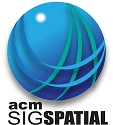
|
The 3rd ACM SIGSPATIAL International Workshop on the Use of GIS in Emergency Management (EM-GIS 2017) | |||||||
|
|
||||||||
|
Program Emergency management is the creation of plans through which communities decrease the impact of disasters and prevent from unexpected events (i.e., human or natural disasters). By quick response and rescue, it saves human lives from the secondary disasters and enhances the stability of communities after disasters. Emergency management concerns acts of terrorism, industrial sabotage, fire, natural disasters (such as earthquakes, hurricanes, etc.), public disorder, industrial accidents, communication failures and public health issues. Emergency management involves four stages: Planning and Mitigation, Preparedness, Response and Recovery. Geospatial applications (including GIS) have been extensively used in each stage of emergency management. Decision-makers can utilize the geospatial information to develop planning and mitigation strategies. GIS models and simulation capabilities are used to exercise response and recovery plans during non-disaster times. They help the decision-makers understand near real-time possibilities during an event. Once disaster occurs, GIS will take effect in real time response and recovery activities. For example, in the Great Earthquake of Nepal in April 2015, the DigitalGlobe supplied plenty of remote sensing and geographic data for rescue. GIS provides reliable support for spatial analysis and decision-making in emergency management. However, the incorporation of spatial dimension or spatio-temporal dimension adds to difficulties of the analysis. How to integrate data and models with spatial structures, such as the integration of the GIS data layers and dangerous chemicals diffusion data, appears as a big issue faced by emergency management. Furthermore, emergency management requires abilities to make quick response to real-time situations. To meet the requirement, it is challenging and promising to appliy lots of new geospatial technologies to support the quick response and recovery and the integrating of location-based wireless information streams. With the advances of GIS technologies, the improvement of emergency management research becomes possible. The first and second workshop were followed by a lot of researchers from China, America, Germen, Japan, India, Canada and Australia. Each year over a hundred researchers participate the workshop and about 15 papers will be included in the workshop. Last year, papers presented at the conference were selected for publications in Geoinformatica (http://link.springer.com/journal/10707) as Special Issue on Spatial Computing in Emergency Management. All accepted papers were recommended to Data Science Journal (http://datascience.codata.org/). The purpose of the EM-GIS 2017 workshop is to provide a forum for researchers and practitioners to exchange ideas and progress in related areas. This workshop in the ACM SIGSPATIAL conference addresses the challenges of emergency management based on advanced GIS technologies. This workshop will bring together researchers and practitioners in massive spatio-temporal data management, spatial database, spatial data analysis, spatial data visualization, data integration, model integration, cloud computing, parallel algorithms, internet of things, complex event detection, optimization theory, intelligent transportation systems and social networks to support better public policy through disaster detection, response and rescue. Topics of Interest The EM-GIS 2017 workshop welcomes papers that address fundamental research issues in this challenging area, with emphasis on GIS applications associated with emergency management. We also encourage papers to report on system level research related to new technologies in GIS, data integration, model integration, disaster detection, response and rescue. A number of invited papers will also be solicited. Topics of interest include, but are not limited to:
Publications All accepted papers will be embodied in ACM SIGSPATIAL proceeding. All accepted papers will be recommended to Data Science Journal (http://datascience.codata.org/). The authors should be responsible for the possible additional journal publication fee. Award The workshop will offer two Best Paper awards. Each winner will be awarded a certificate with signatures of the workshop co-chairs. Paper Submission We invite two types of submissions in the workshop:
Manuscripts should be submitted in PDF format according to the ACM camera-ready templates available at http://www.acm.org/publications/proceedings-template. Papers must be electronically submitted at the following address: Each paper will be reviewed by at least 3 referees. The workshop proceedings will also be part of the ACM Digital Library. At least one of the authors per accepted workshop paper should register for both the main SIGSPATIAL conference and the workshop, and present the paper in the workshop in order to have the paper included in the workshop proceedings. Important Dates
General Chair
Co-Chair
Program Committee
Executive Committee Chair:
Co-Chair:
Committee:
Workshop Photos Previous Workshop
|
||||||
|
|
||||||
|
COPYRIGHT June 2017 | Contact: Danhuai Guo |
||||||
